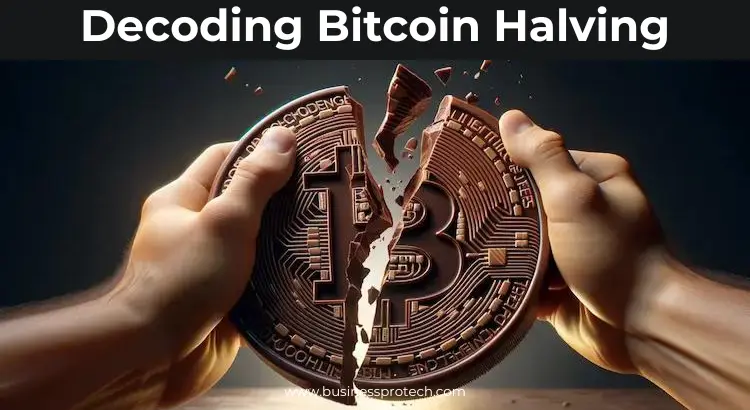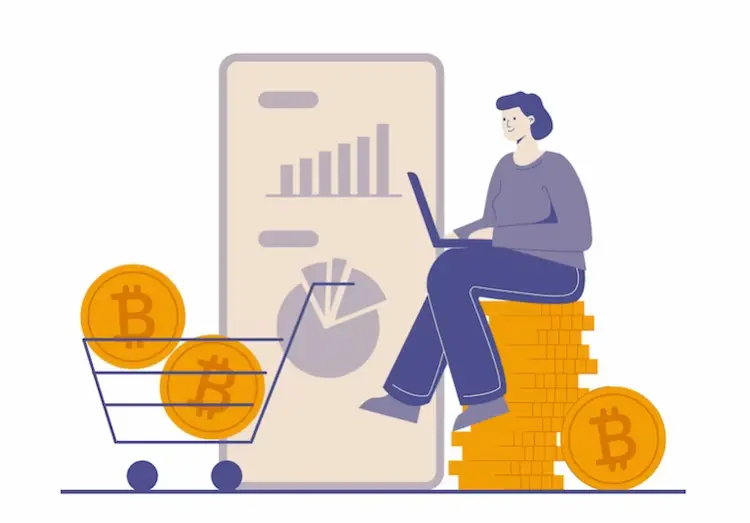Halving is a decrease in the number of new bitcoins mined for each block. That is the process of reducing the generation rate of new cryptocurrency units. It has happened every four years since 2012.
There are 100 days left until the Bitcoin halving in 2024 (as of publication date). The exact date is difficult to predict as it depends on the height of the block. Since a halving occurs every 210,000 blocks, the next Bitcoin halving is expected in April 2024, when the block height reaches 840,000.
A Bitcoin halving is a pre-planned event in which the reward for mining and validating new blocks will be reduced by 50%, with miners receiving only half of the amount of BTC mined. The halving is scheduled to occur every 210,000 blocks, or approximately every four years, and will continue until the total supply of BTC reaches 21 million.

Why is the Exact Time of Halving Unknown?
The Bitcoin mining algorithm has a mark block time of about 10 min. However, the actual time may vary as some blocks take more or less than 10 minutes to mine. This change may affect the next halving deadline, scheduled for April 2024.
Consequeces of Halving
The cost of producing one bitcoin doubles. Miners receive fewer bitcoins, which makes mining them less profitable.
The reward for mining new blocks will be halved when the BTC halving occurs. This will slow down the rate at which new Bitcoins are mined, effectively reducing their inflation rate. Halvings occur approximately every four years and are part of a mechanism to control the number of Bitcoins in circulation, designed to limit the total supply of BTC to 21 million.
Halving frequently leads to market volatility and raised speculation in the crypto space. Miners need to adapt to declining profitability, potentially changing the mining landscape. The event enables technological invention and community growth within the blockchain ecosystem.
The halving strengthens Bitcoin’s appeal as a long-term investment asset with potential inflation protection.
How has the Price of Bitcoin Changed Historically Since Halving?
First halving November 28, 2012
On the day of halving, the price of Bitcoin was about $12. Six months later, around May 28, 2013, the price skyrocketed to around $110, a staggering increase.
Second halving July 9, 2016
On the day of halving, the price of Bitcoin was about $660. Around January 9, 2017, the price rose to approximately $900, a significant increase in six months.
Third halving May 11, 2020
On the day of halving, the price of Bitcoin was about $8,600. Six months later, around November 11, 2020, the price rose above $15,700.
Will Bitcoin Halving Affect Altcoins?
BTC halving draws attention to the cryptocurrency market, including altcoins. Investors may become more optimistic about the growth potential of other cryptocurrencies. This enthusiasm could lead to increased investment in altcoins, causing their prices to rise. Additionally, as Bitcoin mining rewards decrease, some miners may switch to mining altcoins with higher rewards.
Bitcoin price rises after halving. Theoretically, a price increase is possible and will not occur immediately but sometime after the halving.
Theoretically, the price cannot fall below the cost of producing Bitcoin.
Historically, positive sentiment around halvings has been associated with price volatility, with some investors anticipating a rally once the process is complete.
While historically, Bitcoin prices have typically increased following halvings, you should note that this trend is not guaranteed, and I cannot predict future price movements. Price trends will depend on various circumstances in 2024, including factors affecting demand.

Bitcoin Halving History
When Bitcoin was released in 2009, the mining reward was 50 BTC per block. Since then, it has experienced three halvings.
- The first halving occurred in November 2012, when the mining reward was reduced from 50 BTC to 25 BTC.
- The second halving occurred in July 2016, with the mining reward reduced to 12.5 BTC.
- The third cut occurred in May 2020, when the mining reward was again halved to 6.25 BTC per block.
Halving is critical to controlling Bitcoin’s scarcity and inflation, ensuring that its total supply never exceeds 21 million, which aligns with deflationary principles.
Logical Chain After Halving
New bitcoins are not sold because their production costs are higher. Old bitcoins will sooner or later be sold, which can lead to shortages and rising prices.
Expectations for the price of Bitcoin after Halving
Some experts believe the price will rise when miners sell fewer bitcoins after the halving. After halving the price of Bitcoin, it is expected to be worth 50-70-100-200 thousand dollars.